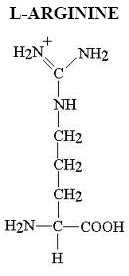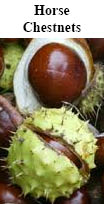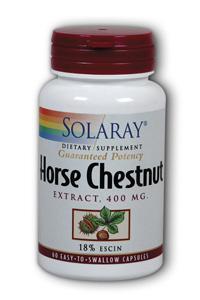|
Search Term: " Chao "
Can L-Arginine Really Help with Circulation Blood Flow?
Date:
February 05, 2011 01:43 PM
The incorporation of nutrients from our diet to the parts of the human body is taken care of by the network of blood vessels that make up the circulatory system, including the distribution of oxygen. Blood flow in effect largely contributes to the effective utilization of bioactive substances from digested foods. The muscles that line the inner walls of blood vessels are responsible for healthy circulation with the aid of a substance that is catalyzed from L-arginine. Arteries, capillaries, and veins are the three primary members of the vascular highway that forms the systematic circulation. The arteries from the heart branch out in smaller vascular tubes called capillaries, which are connected to the system of veins leading back to the heart. Blood continuously flows inside this complex loop of tubes and brings nutrition to the tissues at the end of capillaries.
Endothelium and Smooth Muscle CellsCirculation is a vascular function regulated by the smooth muscle cells within the blood vessel walls that promote streamline flow to avoid turbulence. In a lifetime the flow may result in Chaos, depending on the health of blood vessels. A special class of tissues exposed to the blood plasma known as endothelium stimulates the smooth muscle cells that make up most of the systematic circulation to perform its function. However, factors associated with aging interfere with the proper functioning of both the smooth muscle cells and the endothelium. The human body possesses a gene responsible for the encoding of a group of enzymes that aid healthy blood flow in the circulatory system. This gene identified as Endothelial Nitric Oxide Synthase (NOS), as the name suggests, has something to do with the endothelium and the chemical compound nitric oxide. While chronic expression of nitric oxide in the body may lead to inflammatory diseases, this gas actually serves a focal role in preventing damage to all tissues in the human body resulting from the deprivation of blood supply.
Nitric Oxide and L-ArginineHow? Nitric oxide is produced at the right amounts by all mammals for use as a signaling agent at the cellular level. In the circulatory system, nitric oxide is known to display vasodilator properties, that is, it brings about the relaxation of smooth muscle cells that line the blood vessel walls. Vasodilation is central to circulation and blood flow inasmuch as the widening of vascular walls leads to the flow of blood. Since nitric oxide must be manufactured at healthy levels, it is regulated by Endothelial NOS. However, its production depends on the availability of Arginine in the human body. The amino acid L-arginine is not synthesized at sufficient amounts at all times, and thus it must be derived from our diet. No one can really tell what conditions govern the biosynthesis of L-arginine, and for individuals who have poor nutrition, levels of L-arginine are significantly low. This is the reason why medical professionals advocate the use of L-arginine to counter vascular diseases. Supplementation of L-arginine has in fact been associated to healthy circulation.
(https://vitanetonline.com:443/forums/Index.cfm?CFApp=1&Message_ID=2230) Do you Suffer from Varicose Veins? There Is A Remedy!
Date:
February 03, 2011 01:10 PM
Over 12 million people suffer from varicose veins in the US alone, and leg veins in particular are expected to appear by the time women turn 50. There is nothing pleasant about having varicose veins, and complications are not uncommon, giving rise to venous ulcers and even cancerous tissues. The good news is that a treatment proven to be safe and effective has been around for years with the use of horse chestnut seed extract or HCSE as made available by pharmaceutical companies. Veins may develop conditions leading to the impairment of its functions. Unlike arteries, veins pump blood back to the heart, and acting against gravity bear the weight of the blood coming from the lower extremities. This seems to be a real burden to the veins in the legs, but the vascular walls of all veins have special valves to accomplish this feat. To avoid blood flow moving against the programmed current inside the veins, leaflets of the valves fold and close up as blood passes. A medical condition called chronic venous insufficiency explains the appearance of varicose veins. Veins anywhere in the body can get inflicted with the same symptoms made evident by varicose veins, but the latter is more noticeable because it lies close to the surface of the skin. The valves inside the venous system must be able to act against the turbulence that may occur inside the tube, and when they don’t, blood flow literally descends into Chaos, putting an added pressure on the vascular walls.
For most women, varicose veins must be remedied to avoid the social implications they bring. However, there are a number of patients that are plagued with a variety of complications. Some women practically lose the ability to stand or walk for otherwise short stretches of time, significantly affecting their productivity at work. More severe cases include the formation of skin ulcers close to the area of varicose veins, which may worsen into necrosis or skin loss. All the debilitating effects of varicose veins can be countered by intake of horse chestnut seed extract, including of course the removal of ugly leg veins. Standardized dosage of horse chestnut is among the best remedies for chronic venous insufficiency, accounting for innumerable positive results that have been documented in recent years minus the side effects commonly associated with other medications. In fact, medical professionals in Europe largely rely on the use of horse chestnut to correct varicose veins.
(https://vitanetonline.com:443/forums/Index.cfm?CFApp=1&Message_ID=2229) Turmeric and Alzheimer’s Disease
Date:
May 10, 2007 12:38 PM
Turmeric and Alzheimer’s Disease
In
Compare these findings to people over the age of 65 living in the
So what are people who are living in
Q. How can curry prevent these changes in the brain? Isn’t that a lot to expect from a spice?
A. Evidently, it’s not too much to expect from this spice. Curry comes from the turmeric plant – Curcuma longa is the plant’s official name. Curcumin, a plant compound in turmeric, is the source of curry’s instantly recognizable bright yellow pigment. When it comes to the scientific research of Curcuma longa, the terms curcumin and turmeric are both used. Both refer to the same thing- tumeric extract.
There have been more than 1300 studies on tumeric and its health benefits for humans. Research has shown tumeric is able to help the body get rid of cancer-causing toxins. Turmeric also blocks estrogen receptors and enzymes that promote cancer. And it’s been found to stop the growth of new blood vessels in cancerous tumors – an important factor in keeping cancer from getting larger and spreading throughout the body.
But one of turmeric’s most exciting health benefits is its ability to reduce, prevent, and stop inflammation. While inflammation is a normal and needed response to injury or disease, chronic inflammation can cause damage to tissues. And researchers are now finding inflammation plays a huge role in Alzheimer’s disease.
Q. I’ve always heard that Alzheimer’s disease was caused by complex growths in the brain called plaques and tangles. How can simple inflammation cause such a devastating disease?
A. You are right. Plaques and tangles are indeed the hallmarks of Alzheimer’s disease. But researchers looking at the brain damage caused by Alzheimer’s have always noted the presence of inflammation wherever plaques and tangles form. In the past, this inflammation was thought to be simply a consequence of Alzheimer’s disease. Now scientists believe the inflammation itself starts a chain reaction ultimately contributing to the development of Alzheimer’s disease.
` When cells in the brain are disrupted by inflammation, amyloid, and a protein normally found in the brain, beings to act Chaotically. This Chaos results in the creation of beta-amyloid, protein that is toxic to cells in the brain. Sticky deposits of beta0amyloid build up and collect around the cells, making dense clumps or plaques. Because the brain can’t break the plaques down and get rid of them, they stay right where they are and slowly accumulate.
Tangles result when long protein fibers that act like scaffolding for brain cells begin to twist and tangle. The cell is damaged and eventually dies. But the tangled proteins remain in the brain even after the dead neuron has been cleared away. And inflammation might be the culprit causing the long protein fibers to start tangling.
The consequence of these abnormalities of protein in the brain is more than the cell death they cause. They also act as roadblocks interfering with electrochemical messengers being shot from cell to cell. Therefore, the remaining healthy cells’ activity is diminished as well.
Research of identical twins has repeatedly shown that if one twin has Alzheimer’s disease, the other has a 60% chance of developing the disease, too. Scientists from the Karolinska Institute in
In fact, the inflammatory process might occur years before the onset of Alzheimer’s, and be the result of any number of infections people can contract. That’s why current research is searching for ways to protect brain cells from inflammation. And why some countries have low rates of Alzheimer’s disease, like
Q. Why curry? Couldn’t other lifestyle difference account for the low rates of Alzheimer’s disease in
A. That’s a good question. When researchers begin studying a disease, like Alzheimer’s, they look for trends to help them determine how and why the disease occurs. For example, we all now know the connection between cigarettes smoking and long cancer. But, it wasn’t until the 1930’s that doctors noticed the trend fro cigarette smokers to have more lung cancer than people who didn’t smoke.
So it has been with researchers studying Alzheimer’s disease. They know Alzheimer’s disease has an important connection to inflammation. They also know turmeric reduces inflammation. And when researchers noticed these trends – that people in India eat high amounts of curry from turmeric and have very little Alzheimer’s disease – they began to theorize that turmeric might be able to prevent or even treat the illness. And the research they designed around these trends has unequivocally found turmeric to be on common denominator.
Q. What have the turmeric studies shown so far?
A. Simply amazing findings are coming from curry research. Not only does turmeric slow down cancer growth, it’s also been found to correct the cystic fibrosis defect in mice, help prevent the onset of alcoholic liver disease, and may slow down other serious brain diseases like multiple sclerosis.
Researchers from the
And now the UCLA Alzheimer’s Disease Research Center (ADRC) is using turmeric in clinical trials and studying the effect of this powerful spice in patients diagnosed with this devastating disease. Clinical trials are the gold standard of medical research. But it’s rare in Alzheimer’s disease. And it’s even more rare when all-natural herbs and spices like turmeric are used in hopes the positive benefits will be discovered. The head of the UCLA’s research team was recently interviewed and stated that setting out to hopefully prove turmeric’s ability to prevent and treat Alzheimer’s disease was “tremendously exciting.”
Q. I recently read that one of the non-steroidal anti-inflammatory drugs (NSAID) was found to prevent Alzheimer’s disease. Is this true?
A. Scientists recently studied ibuprofen, one of the NSAIDs investigated for Alzheimer’s disease Prevention. Ibuprofen belongs to a family of drugs that includes naproxen, indomethacin, nabumetone, and several others. These drugs are used most often to get rid of headaches, mild arthritis, and other kinds of pain and inflammation.
In the studies, the average dose of ibuprofen was 800mg a day. Patients took the product for two years. While the results suggested that ibuprofen might reduce the risk of developing Alzheimer’s, ibuprofen’s side effects are too harmful to be a valid lifelong prevent aid treatment. Ibuprofen, like other NSAIDs, can cause gastrointestinal bleeding when used at high dosages over a long period of time. Long term use of ibuprofen can also lead to analgesic nephropathy, a kind of kidney damage caused by NSAIDs.
As we discussed earlier, turmeric appears to block and break up brain plaques that cause the disease and helps reverse some of the damage already present. Ibuprofen does not provide any protection against free radical damage. No anti-inflammatory medicine can do this.
Q. If I eat curry will I be protected against Alzheimer’s disease? There aren’t many foods or recipes I make that require curry, do I need to eat it every day? And how much do I need?
A. If you enjoy Indian cuisine, by all means, enjoy these delicious foods. You’ll benefit your brain and your appetite. But you make a good point, American meals rarely contain curry. That’s why supplements that contain extracts are suddenly quite popular. In fact, there are numerous turmeric/curcumin supplements on the market today.
But like all nutritional supplements, some turmeric supplements are superior to others. You need to read their labels to make sure the turmeric extract you are buying will provide the protection you need. Look for high-potency turmeric extract from turmeric (Curcuma longa) rhizome. And make sure the extract is standardized to contain 90% curcuminoids, the active ingredient in turmeric responsible for the positive research findings.
Conclusion
Researchers once thought that preventing for Alzheimer’s disease would elude them for decades. In fact, several scientists privately speculated the disease might never be ameliorated. They thought the origin of the disease was too complex and the symptoms of the disease were too profound.
That’s why ongoing research on turmeric is so exciting. A safe, natural, and effective way to protect against Alzheimer’s disease almost seems too good to be true. But, the nation of
(https://vitanetonline.com:443/forums/Index.cfm?CFApp=1&Message_ID=1535) | ||||||||||||||||||||||||




 The resulting dilated veins are what we refer to as varicose veins, which is just one symptom of chronic venous insufficiency. Age is one major factor in the development of this medical condition. It is a fact that the valves inside the leg veins are more susceptible to decreasing elasticity as we age due to daily wear and tear the veins in the legs has to endure over the years. Since female hormones contribute to the relaxing of the vascular walls, varicose veins are more likely to afflict women.
The resulting dilated veins are what we refer to as varicose veins, which is just one symptom of chronic venous insufficiency. Age is one major factor in the development of this medical condition. It is a fact that the valves inside the leg veins are more susceptible to decreasing elasticity as we age due to daily wear and tear the veins in the legs has to endure over the years. Since female hormones contribute to the relaxing of the vascular walls, varicose veins are more likely to afflict women. 



